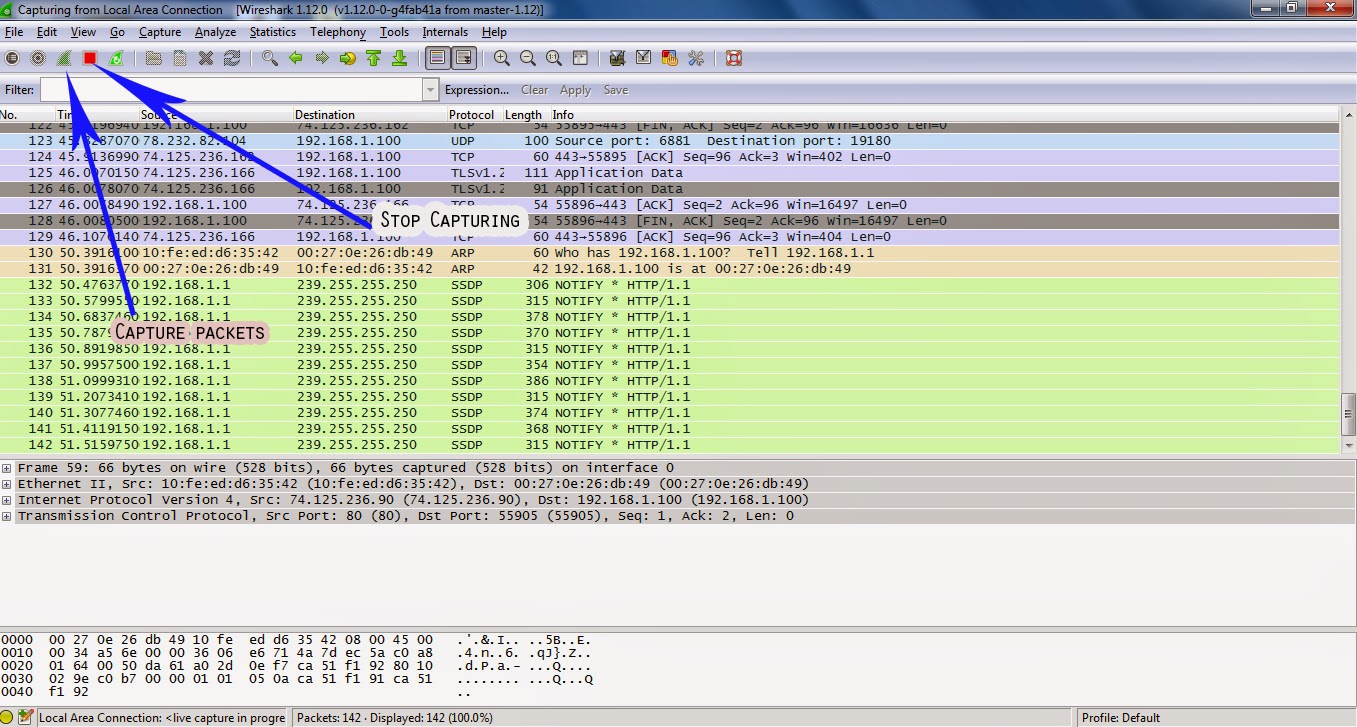
- Top wireshark filters how to#
- Top wireshark filters install#
- Top wireshark filters full#
- Top wireshark filters software#
- Top wireshark filters password#
You can either start it from a terminal, by using: So, the first thing to do, is to start Wireshark with sudo. The explanation is simple, you need to have administrator privileges to use this feature. The issue, is that when you start Wireshark directly, it doesn’t detect any network interface (check the “All interfaces show” dropdown, it’s empty).

You can either start a new one, or import one from a file, but you need one. When you start Wireshark for the first time, the interface looks like this:īasically, you can almost do nothing with this tool before having a network capture to analyze. Let’s browse the most important features together.
Top wireshark filters how to#
If you haven’t used this tool, the difficulty is probably starting now to understand exactly what it does and how to use it. Installing Wireshark is pretty straightforward.
Top wireshark filters install#
If you prefer using the command line to install new applications, you can do the same thing by opening the terminal, and typing those commands:Īre you a bit lost in the Linux command line? Check this article first, for the most important commands to remember, and a free downloadable cheat sheet so you can have the commands at your fingertips.Īnd if you are using Ubuntu and want to install Wireshark on it, I have a dedicated article on this topic (click on the link).
Top wireshark filters password#

Then, type “wireshark” in the search engine and press Enter.Open the “Options” menu, and click on “Refresh package lists”.Go to Preferences > Add / Remove Software.Here are the required steps to install Wireshark on Raspberry Pi OS with Desktop: If you are lost in all these new words and abbreviations, request my free Raspberry Pi glossary here (PDF format)! The first third of the book teaches you the basics, but the following chapters include projects you can try on your own. It’s a 30-day challenge, where you learn one new thing every day until you become a Raspberry Pi expert. If you are looking to quickly progress on Raspberry Pi, you can check out my e-book here.
Top wireshark filters full#
So keep reading for the full installation procedure, and an introduction to some of the most powerful features.
Top wireshark filters software#
It’s available in the Add/Remove software tool, or via the command line, by using APT: “sudo apt install wireshark”.īut once installed, the first steps might be a bit confusing if you never used it before. Wireshark can be installed on Raspberry Pi from the default repository. I will show you how to install it on your device, and share interesting features for you to use. Basically, it will intercept network packets and display their content in a nice interface, so you can analyze them. So now we have the MME_UE_S1AP_ID, we can filter all S1 messaging containing that MME_UE_S1AP_ID, we’ll use this Wireshark filter to get it: s1ap.MME_UE_S1AP_ID = 2īoom, there’s a all the signalling for that subscriber.Wireshark is a free and open-source tool to capture and analyze network traffic. (It’s worth noting the MME_UE_S1AP_ID is only unique to the MME – If you’ve got multiple MMEs the same MME_UE_S1AP_ID could be assigned by each). The MME_UE_S1AP_ID is a unique identifier, assigned by the MME to identify which signaling messages are for which subscriber. Inside the protocolIEs is the MME_UE_S1AP_ID – This unique identifier will identify all S1 signalling for a single user.

Next up let’s take a look at the contents of one of these packets, Quick note – Not all IntialUEMessages will contain the IMSI – If the subscriber has already established comms with the MME it’ll instead be using a temporary identifier – M-TMSI, unless you’ve got a way to see the M-TMSI -> IMSI mapping on the MME you’ll be out of luck. The Wireshark e212 filter filters for ITU-T E.212 payloads (ITU-T E.212 is the spec for PLMN identifiers). Luckily we can filter in Wireshark to find the IMSI we’re after e212.imsi = "001010000000001" The S1 interface only contains the IMSI in certain NAS messages, so the first step in tracing a subscriber is to find the initial attach request from that subscriber containing the IMSI. So how do we find all the packets relating to a single subscriber / IMSI amidst a sea of S1 packets? The S1 interface can be pretty noisy, which makes it hard to find the info you’re looking for.


 0 kommentar(er)
0 kommentar(er)
